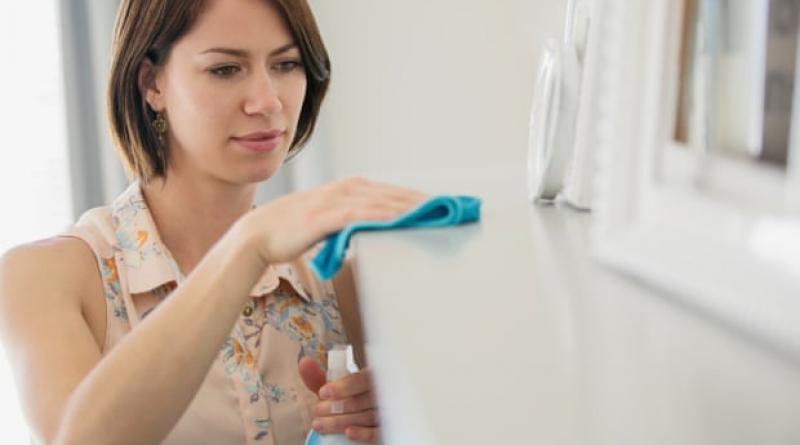Five ways to make your home less toxic.

We are surrounded by chemicals – in food and drink, cleaning products, household items and furnishings. Here’s how to reduce household pollution.
Ventilate
Cleaning products, cooking, candles and building materials all contribute to pollution inside our homes. The British Lung Foundation (BLF) recommendschoosing fragrance-free cleaning products and using solid or liquid products when possible, rather than sprays. It also advises opening windows or skylights, especially when cooking or showering, and avoiding the use of several candles or incense sticks in a small room such as a bathroom. As outdoor pollution can also travel into the home, the BLF also suggests keeping windows closed when Defra’s Daily Air Quality Index is high.
Cut down on plastic
The synthetic chemical Bisphenol A (BPA) is found in many plastic products and can be ingested or absorbed through skin contact, potentially disrupting the endocrine system. Ninety-five percent of adults are thought to have traces of BPA in their bodies through continuous exposure – Tamara Galloway, a professor of ecotoxicology at the University of Exeter, says avoiding heavily processed and packaged food can help to limit exposure. Breastfeeding or buying baby bottles with a BPA-free label are also among her recommendations.
Make your own cleaning products
The author of All You Need is Less: A Guilt-Free Guide to Eco-Friendly Living and Stress-Free Simplicity, Madeleine Somerville, says soap, baking soda and vinegar are all you need to make your own cleaning sprays. She recommends filling a spray bottle with hot water, leaving a few inches at the top, before adding a ¼ cup of white vinegar, 2 tbsp of eco-friendly washing-up liquid and an optional 1tbsp of borax.
Reduce dust and tackle any damp or mould
A 2016 US study identified 45 toxic chemicals in indoor dust, including phthalates, flame retardants and phenols. “Because indoor dust contains chemicals from a wide variety of products, it is like a parking lot for chemicals in the home,” wrote Veena Singla, co-author of the study from the Natural Resources Defense Council in California. Simple steps to reduce exposure include washing hands with plain soap and water, keeping household dust to a minimum by dusting with a damp cloth and using a vacuum with a high-efficiency particulate air (Hepa) filter. Damp and mould can also affect your immune system, as well as increase the chance of respiratory problems. Preventing the build-up of condensation is key, says the NHS, though mould be must removed carefully so as not to release spores.
Consider your paint choices
As well as the fumes and chemicals given out during painting, freshly decorated walls can continue to pollute long after they are dry. Paint labelled “ecofriendly” or “natural” due to its lowered levels of volatile organic compound (VOC) are not necessarily “green”, wrote interior design journalist Katherine Sorrell. Among her recommendations are Edward Bulmer Natural Paint, Aglaia, Biofa, Earthborn and Ecos Organic Paints.
17 March 2019




